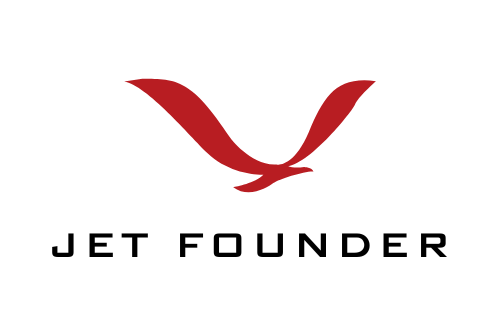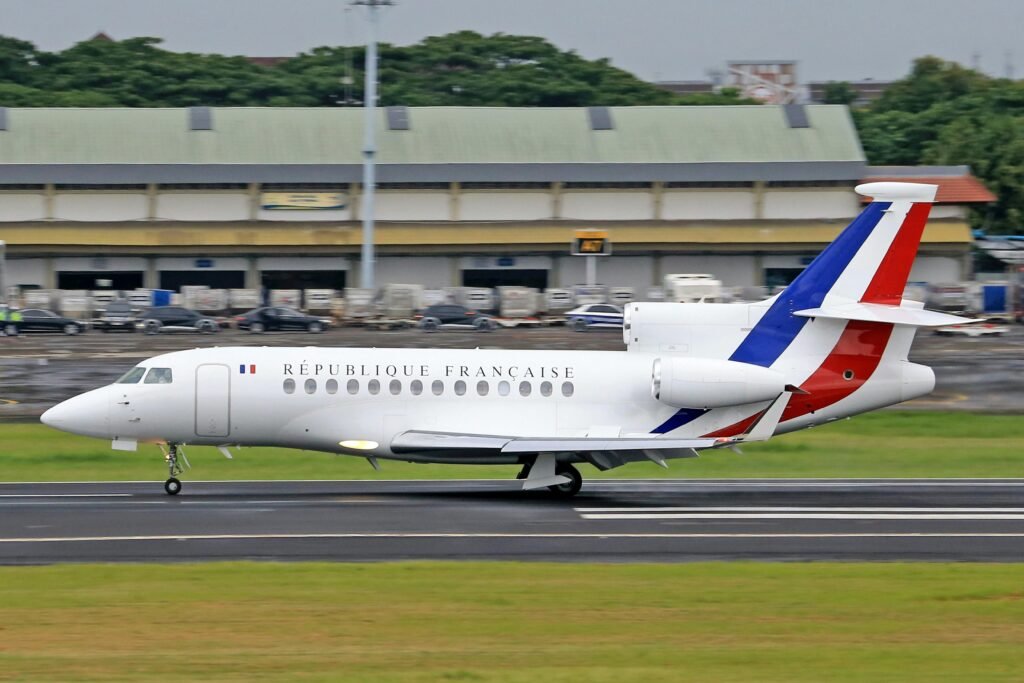The Falcon 7X has an important spot in business aviation history because it set a new direction for Dassault’s private jet development. Near the end of the 20th century, private aviation was seeing a lot of changes. Those who purchased business jets were looking for airplanes that were faster, had extended range and included the latest technology and best cabin comfort. Already famous worldwide for its Falcon 900 series, especially the 900EX and 900LX, Dassault Aviation saw that the standard for long-range business jet platforms needed to be redefined.
The respect the Falcon 900 earned was based on its dependability and distance it could cover, yet customers expected something more advanced to battle the Gulfstream and Bombardier. What customers hoped for was a jet that could cover more miles, climb faster, be more efficient and offer a totally up-to-date cockpit. Dassault wanted to maintain its place in the high-end jet market and meet client demands, so they began developing the Falcon 7X which blended advanced military technology with luxury features meant for civilian use.
Launching the Falcon 7X Program
The Falcon 7X program was officially launched in 2001 as the next evolutionary step beyond the Falcon 900. The company designed this aircraft using 3D digital Mock-Up technology which helped integrate the systems better and reduced the development cycle. In 2005, the first prototype was shown at the Paris Air Show and the same year, it finished its first test flight. The aircraft quickly drew attention in the industry because of its elegant design and what it was supposed to be able to do. After spending two years on strict tests and getting certified, it was given a green light by the FAA and EASA and began flying passengers in 2007.
Even before the aircraft was first delivered, more than 50 orders were placed for the Falcon 7X, showing Dassault had chosen wisely with the program. Across the years, more business aviation operators, corporations and government departments started to use it. By today, 300 Falcon 7X aircraft have been built which shows their popularity and success.
Power and Performance of the Falcon 7X
Engine Specifications and Fuel Efficiency
Its remarkable performance is largely because of its three PW307A engines from Pratt & Whitney Canada. Each engine gives a thrust of 6,402 pounds, providing lots of power and excellent fuel efficiency for less emission. Going for three engines instead of two in the jet can make the aircraft more streamlined and flexible in its work.
Having the third engine on the tail provides extra protection for long flights over oceans. This design gives the aircraft ETOPS-like flexibility which means it can safely operate on longer over-water routes than twinjets in the same class. This also gives the jet better climbing ability in both warm and high places, so it can operate from airports with tough runways or altitudes.
The dual-channel FADEC (Full Authority Digital Engine Control) system featured on the PW307A engines helps manage thrust more effectively, supports smooth flying and adjusts power automatically. Because of this, the aircraft can manage fuel and its performance much smarter at every stage of flying.
Range, Endurance, and Global Reach
An important advantage of the Falcon 7X is its outstanding ability to fly five thousand nine hundred and fifty nautical miles (11,020 km) at Mach 0.8. It helps the plane fly non-stop between important cities such as Los Angeles to Paris, Dubai to Tokyo and Singapore to Cape Town. This is valuable for business travelers who want to travel fast and avoid stopovers for fuel.
It can fly for 11.5 hours or more without re-fueling which gives it a great deal of flexibility compared to other large planes in the long range category. This also gives owners the power to schedule direct routes based on convenience rather than technical limitations, optimizing both time and cost.
Fuel burn for the Falcon 7X is very efficient. The plane’s modern aerodynamics and balanced tri-jet system allow it to save 30% fuel over airplanes that belong to earlier generations in the same class. This leads to less expense for operators and owners as well as a reduced effect on the environment.
Weight Capacities and Payload Versatility
The airplane has a Maximum Takeoff Weight (MTOW) of 70,000 pounds, letting it take off with a hefty payload without reducing its efficiency. The Maximum Landing Weight (MLW) is 62,400 pounds, but with an impressive Maximum Zero Fuel Weight (MZFW) of nearly 41,000 pounds which demonstrates how sturdy and capable the aircraft is. Because the Falcon 7X can haul up to 6,000 pounds, it is possible to have fully loaded fuel tanks and room for both heavy luggage and many passengers. For this reason, it is perfect for corporate travel, important events and operations that ask for special features or extra equipment.
Dimensions and Aerodynamic Engineering
The Falcon 7X is 76 feet 1 inch long, 25 feet 8 inches tall and it has a wide wingspan of 86 feet. The balanced proportions and steady-state flight of jets are aided by these measurements. The wing system in the Falcon 7X is one of the most advanced civil jets designed by Dassault.
Building on what it learned through the Rafale, Dassault made the wings with blended winglets to decrease the aircraft’s induced drag while it climbs to high altitudes. The 7X’s wing design makes it possible for the plane to cruise efficiently at a height of 51,000 feet, where jet stream effects are less, air turbulence is less frequent and the fuel needed for the flight is saved.
Because its wing loading is optimized, the aircraft is both agile and comfortable which makes it much smoother during turbulence than other jets like it. Its use of advanced materials like carbon composites and light alloys makes the aircraft very well-behaved aerodynamically, even though it weighs less.
Inside the Falcon 7X Avionics Suite
EASy Flight Deck
The Falcon 7X uses the Honeywell EASy (Enhanced Avionics System) flight deck, offering a significant upgrade in cockpit design. The system helps manage aircraft in a simple way by displaying everything clearly, showing the environment and placing controls where they are most convenient. The avionics in the Falcon 7X links with avionics from Dassault’s 900EX EASy, 900DX and 2000EX, delivering a workspace pilots can use efficiently and without learning new skills.
Dassault used fly-by-wire system in their military jets, so they used their experience and implemented this technology in the Falcon 7X to make the jet more controllable. This technology makes the aircraft more responsive and safer by automatically adjusting control surfaces for smoother, more stable flight.
Honeywell Primus II Epic Suite
The Honeywell Primus Epic suite is a state-of-the-art avionics system built for regional and business jets. It offers wide flat-panel displays, user-friendly navigation, and unique graphical flight planning to boost situational awareness and ease pilot workload.
Dassault engineers installed this system on the Falcon 7X which provides an advanced automatic flight control system and sophisticated navigation tools. With dual air data sensors, a 24-channel GPS system, turbulence detection radar (Primus 880), and enhanced ground proximity warning systems (EGPWS), the Falcon 7X ensures pilots are well compatible with EASy (Enhanced Avionics System) flight deck.
Precision Craftsmanship of Falcon 7X
Military Precision in a Civilian Jet
Dassault’s rich military aviation background significantly influenced the Falcon 7X’s performance. A lot of technologies used in this jet were borrowed from its Rafale fighter program. Moreover they had experience with jets like Mirage which is a battle proven jet.
The aircraft features a Digital Flight Control System (DFCS) that improves flight stability and minimizes pilot workload. This level of automation and control precision is uncommon in business jets and makes the Falcon 7X particularly reliable in challenging weather or terrain.
Additionally, the aircraft includes Enhanced and Synthetic Vision Systems (EVS and SVS), which give pilots improved visibility during low-light or poor-weather operations. These systems superimpose terrain and runway visuals directly onto the heads-up display, enhancing both safety and situational awareness.
A Luxurious Cabin Designed for Comfort
Dassault demonstrates how luxury and engineering work together in the cabin of the Falcon 7X. There are usually 12 to 14 passenger seats, but this depends on the layout inside the aircraft. It has three separate seating areas that guests can change to suit business needs, dining or taking a break.
There are 28 large windows, so the entire cabin is bright with daylight, giving it a nice and refreshing atmosphere. Because the cabin is 6 feet 2 inches high and 7 feet 8 inches wide, there is plenty of headroom and space to move around during long flights.
Partnering with BMW for Premium Interiors
In 2011, Dassault partnered with BMW Group Designworks to enhance the Falcon 7X’s interior. The collaboration brought out a more refined and visually dynamic environment with flowing curves, ambient lighting, and rich material options. This gives clients an option to choose from a wide selection of luxury finishes, from high-quality leather and plush carpeting to hand-crafted wooden accents. This partnership elevated the perception of Dassault interiors and gave the Falcon 7X a distinctive edge in the luxury jet market.
Market Performance and Customer Reception
Operators have continued to see the Falcon 7X as a unit with impressive range, strong construction and efficient operation since it was introduced in 2007. A wide range of heads of state, corporations and VIP operators around the world chose to use it.
A total of about 300 7X units running in six continents made this an impressive commercial achievement which led to the development of the Falcon 8X. There is still a lot of activity in the Falcon 7X resale market and second-hand models sell for $20–25 million, again depending on their configuration, number of hours flown and condition. A brand-new Falcon 7X was originally priced at around $54 million USD, and while it has since been succeeded by the Falcon 8X, many operators still prefer it for its versatility, comfort, and proven performance.



